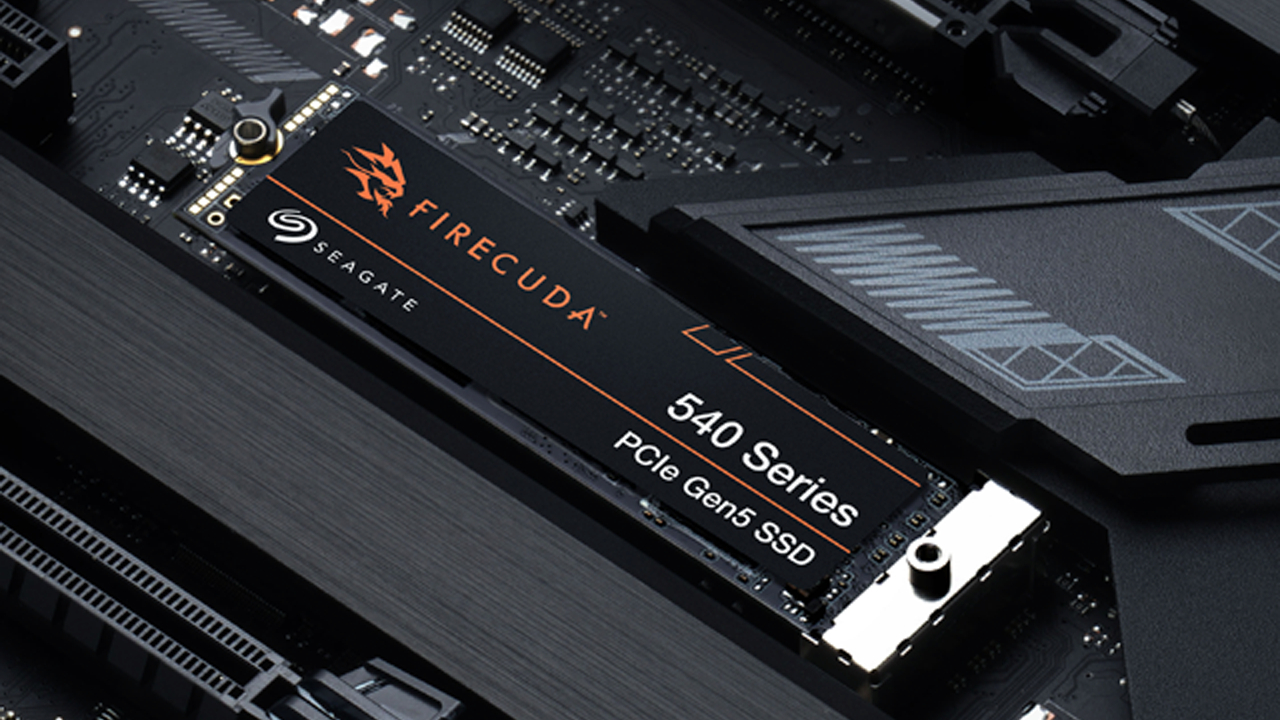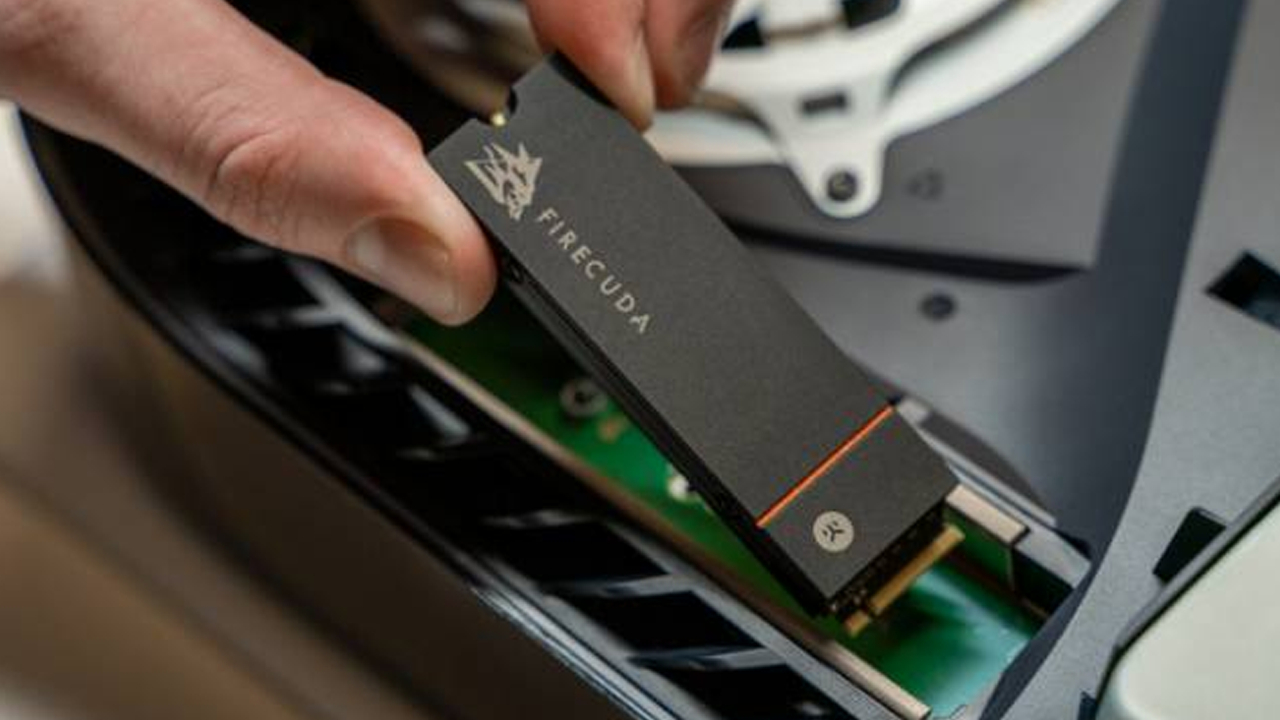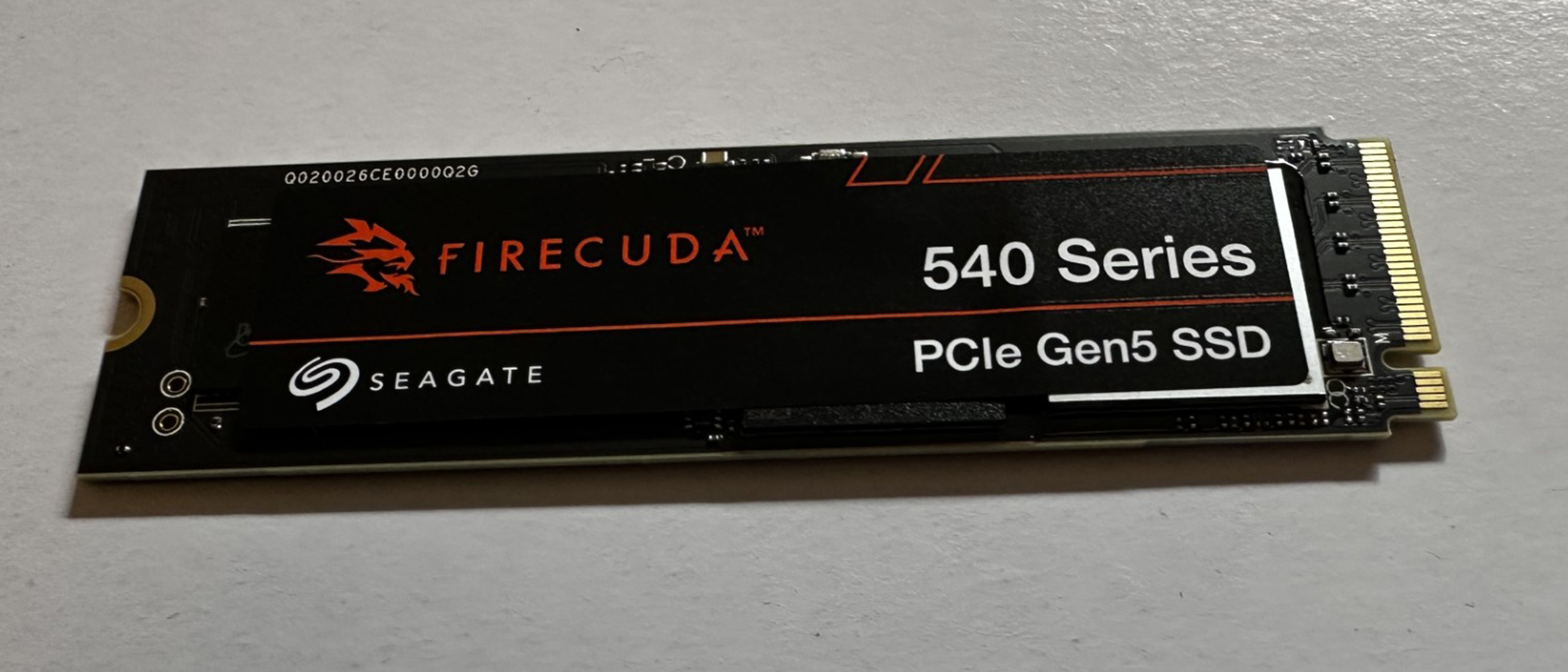TechRadar Verdict
The Seagate FireCuda 540 represents everything that the next-generation of NVMe technology is capable of with its impressive sequential performance, however, with few real-world advantages right now, there’s no need to upgrade if you’re already running a competent, and far cheaper Gen 4.0 model instead.
Pros
- +
Leading sequential performance
- +
Strong write endurance
- +
Decent random performance
Cons
- -
Quite expensive
- -
No major gaming advantages right now
Why you can trust TechRadar
Seagate FireCuda 540: 90-second review
The Seagate FireCuda 540 is one of the first high-profile Gen 5 NVMe SSDs to hit the market for those who are running one of the best processors for gaming and best motherboards that are PCIe 5.0 compatible.
It’s more than just a successor to the widely popular Seagate FireCuda 530 from a couple of years ago, though, it’s a drive that shows you exactly what the next generation is capable of, but at a cost.
The greatest cost will be to your wallet, because this flagship Gen 5 NVMe SSD carries a particularly high MSRP regardless of where you are in the world. That’s because current motherboard support for Gen 5 NVMe SSDs is limited to the most recent AMD CPU generation with socket AM5 and the current crop of Intel LGA 1700 options. You’re paying a pretty penny to be an early adopter without factoring in the cost in, ultimately.
Speaking of cost, the Seagate FireCuda 540 currently retails for $189.99 (around £150 / AU$300) for 1TB and $319.99 (approximately £260 / $AU$500) for 2TB which is far from cheap.
For context, you can currently find Gen 4 alternatives such as the aforementioned FireCuda 530 and the excellent Kingston Fury Renegade SSD for a fraction of the price for around a 30% performance reduction. That’s long been the case with early adoption, however, you’re paying a premium to be on the bleeding edge, and the results do speak for themselves.
That’s because the Seagate FireCuda 540 absolutely lives up to its claims of 10,000 MB/s sequential performance with both its reads and writes when plugged into to a Gen 5 compatible NVMe M.2 port. The question remains of whether you need this level of sequential performance right now, or if you just want to be ready for when some of the best PC games will take advantage.
Considering just how slow the adoption of Gen 4 SSDs were to the mainstream, having launched in 2019 before being adopted in 2020 and 2021 for PC and PS5, we could be waiting a couple of years to really see software push this hardware in any meaningful way. Still, the Seagate FireCuda 540 is undoubtably a top contender for best SSD of 2023, even if it still feels a bit ahead of its time.
Sign up for breaking news, reviews, opinion, top tech deals, and more.

Seagate FireCuda 540: Price & availability
- How much does it cost? Starting at $189.99 (around £150 / AU$300)
- When is it available? Available now
- Where can you get it? Available in the US, UK, and Australia
The Seagate FireCuda 540 is currently available in the US, the UK, and Australia with a starting price of $189.99 (around £150 / AU$300) for 1TB and $319.99 (approximately £260 / $AU$500) for 2TB.
For contrast, that’s a similar price that you will expect to pay for Gen 5 offerings such as the Corsair MP700 which carries an MSRP of $179.99 (about £147.99 / AU$280) for 1TB and $284.99 (around £230 / AU$430) for 2TB. Simply put, these Gen 5 drives are by no means cheap and you are paying a premium when getting in on the ground floor.
Seagate FireCuda 540: Specs
| Header Cell - Column 0 | Seagate FireCuda 540 | Seagate FireCuda 530 |
|---|---|---|
| Price | Starting at $189.99 (around £150 / AU$300) | Starting at $69.99 (about £60 / AU$110) |
| Capacities | 1TB, 2TB | 500GB, 1TB, 2TB, 4TB |
| Interface | PCIe 5.0 x4 NVMe 2.0 | PCIe 4.0 x4 NVMe 1.4 |
| Rated Sequential Read | Up to 10,000MB/s | Up to 7,300MB/s |
| Rated Sequential Write | Up to 10,000MB/s | Up to 6,900MB/s |
| TB Written | Up to 2000TB | Up to 5100TB |
| Warranty | 5-year Limited | 5-year Limited |
Seagate FireCuda 540: Design & features
Things are kept simple in terms of the physical and visual design of the Seagate FireCuda 540, and that’s for the best considering it will live under a motherboard heatsink from the second it’s installed into your PC. A simple sticker covers the controller and the DRAM with the company’s logo and the name of the drive itself on one side and that’s your lot.
More interesting is the choice of controller itself. That’s because the Seagate FireCuda 540 is running the Phison E26 controller, which is significantly faster than the already excellent Phison E18 controller as featured in many of the best M.2 SSDs to hit the market over the last four years. That’s only one side of the story, though, because further adding to the lightning-fast performance here is the 232-Layer Micron TLC flash memory on board coupled with LPDDR4 DRAM cache for short term memory reads, as many top-end drives include.
While this is a Gen 5x4 drive through and through, it’s also backwards compatible with older 4x4 NVMe slots as well and will cap the performance out at around 7,300 MB/s read and write respectively, however, if you don’t own a PCIe 5.0-ready motherboard then you’re burning money buying one of these to serve for this reason. The rated write endurance is also solid and roughly works out blow-for-blow with the capacity itself. Our review unit is rated at 2000TB for 2TB, however, the 1TB variant is good for 1000TB which is pretty decent overall.

Seagate FireCuda 540: Performance
It may cost a pretty penny but there’s no denying that the Seagate FireCuda 540 absolutely excels as at the top-end of what NVMe drives are physically capable of in 2023. In our industry-standard tests, such as with CrystalDiskMark 8, the drive was absolutely able to hit the quoted performance caps by delivering 10,092.67 MB/s read and 10,144.55 MB/s writes respectively which absolutely blows even the leading Gen 4.0 models out of the water.
This is further compounded by the random 4K read and writes as well as the Seagate FireCuda 540 offered up 625.68 and 476 read and write respectively, which is among the best I’ve personally seen from an NVMe SSD in all my years of testing. AnvilPro further highlighted the finesse of this drive with a total overall score of 30,163.68 which I hadn’t personally seen go so high in all my many reviews of NVMe hardware. Generally speaking, a top-end Gen 4 drive would output around 25,000, so that’s a good 20% increase straight out of the gate.
Furthermore, in our in-house 25GB file transfer test, the Seagate FireCuda 540 further shined with a time of just 16 seconds which comprised a total of 3,716 files including documents, videos, photos, and programs. That’s seriously fast, and goes to show the power of the Phison E26 controller in tandem with the 232-Layer Micron TLC flash memory.
In terms of real-world file transfer times, from a Gen 4 NVMe drive over to the Seagate FireCuda 540 is equally impressive. This can be evidenced with Assassin’s Creed Valhalla’s mammoth file size of 158.78 GB transferring to the Gen 5 model in just 58 seconds. Similarly, smaller titles such as Deathloop with its 30.98 file size made the jump in only 11 seconds which works out to around 3GB/sec. That’s blisteringly fast, and further cements the sequential prowess of this drive in action.
There is a caveat, though, and that’s the fact that no PC games right now are really optimized for blisteringly quick sequential performance on offer right now. That isn’t to say that future releases won’t be able to take advantage, but games don’t even need a Gen 4 yet to run optimally barring a small list of exceptions. What you’re ultimately buying is futureproofing and insurance so that bigger games that benefit from an SSD will run flawlessly for extra overhead instead of being an essential purchase right now.

Should you buy the Seagate FireCuda 540?
Buy the Seagate FireCuda 540 if...
You want leading sequential performance from your NVMe SSD
The Seagate FireCuda 540 is unrivaled in its sequential performance excelling up to 10,000 MB/s read and write respectively which few NVMe drives can boast right now.
You want a futureproofed machine
By purchasing a Seagate FireCuda 540 with a PCIe 5.0 motherboard, you’ve guaranteeing your system will be able to run the future of titles which may need a faster drive than what’s available to most users.
You want leading sequential performance from your NVMe SSD The Seagate FireCuda 540 is unrivaled in its sequential performance excelling up to 10,000 MB/s read and write respectively which few NVMe drives can boast right now.
You want good value for money
While incredibly impressive, the Seagate FireCuda 540 isn’t exactly an essential purchase for anyone on PC right now apart from enthusiasts. No software really needs or benefits from 10,000 MB/s right now, but that could change in the near future.
Seagate FireCuda 540: Also consider
| Header Cell - Column 0 | Seagate FireCuda 540 | WD Black SN850 | Kingston Fury Renegade |
|---|---|---|---|
| Price | Starting at $189.99 (around £150 / AU$300) | Starting at $49.99 (about £40 / AU$75) | Starting at $79.99 (about £65 / AU$125) |
| Capacities | 1TB, 2TB | 500GB, 1TB, 2TB | 500GB, 1TB, 2TB, 4TB |
| Interface | PCIe 5.0 x4 NVMe | PCIe 4.0 x4 NVMe | PCIe 4.0 x4 NVMe |
| Rated Sequential Read | Up to 10,000MB/s | Up to 7,000MB/s | Up to 7,300MB/s |
| Rated Sequential Write | Up to 10,000MB/s | Up to 5,100MB/s | Up to 7,000MB/s |
| TB Written | Up to 2000TB | Up to 1200TB | Up to 4000TB |
| Warranty | 5-year Limited | 5-year Limited | 5-year Limited |
WD Black SN850
While it was once incredibly expensive, the price of the original WD Black SN850 has continued to plummet throughout 2023 with rates on 1TB and 2TB models being particularly aggressive.
Read the full WD Black SN850 review
Kingston Fury Renegade
Armed with the Phison E18 controller and 176L flash memory, the Kingston Fury Renegade tops out Gen 4 sequential performance for rates that its competition just can’t match up to even years after its release.
Read the full Kingston Fury Renegade review
First reviewed November 2023

Formerly TechRadar Gaming's Hardware Editor, Aleksha McLoughlin is now a freelance writer and editor specializing in computing tech, video games, and E-commerce. As well as her many contributions to this site, you'll also find her work available on sister sites such as PC Gamer, GamesRadar, and Android Central. Additionally, more of her bylines can be found on Trusted Reviews, Dexerto, Expert Reviews, Techopedia, PC Guide, VideoGamer, and more.
